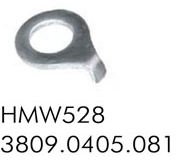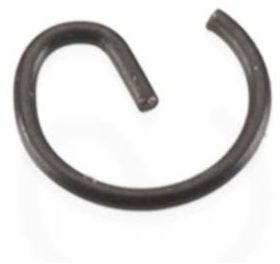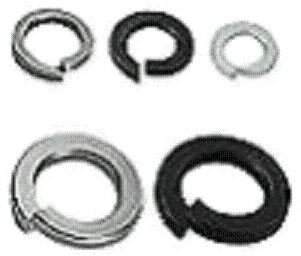How Bolt Locking Devices Work
Understanding Nut Locking Mechanisms
Bolts and nuts used for locking important metal parts in machines and automotive applications have a tendency of slowly unlocking themselves due to various types of mechanical vibrations. To prevent this from happening many different simple bolt locking techniques are employed, suiting the particular type of nut used. Let’s discuss them systematically:
Split Pins: These are generally made up of nickel or mild steel alloys. Spilt pins are enforced by passing them through a slot in the nut and a hole in the bolt or the stud thus preventing the tightened nut from getting unlocked. Normally split pins are used with slotted or castled nuts and are selected for correct fits in the slot as well as the hole. The size of the pin is selected as per the width of the slot in the nut and the diameter of the hole in the bolt.
Spring Washers: These are single metal coils having a square cross sectional area and are made up of specially oil hardened and tempered iron, possessing hard spring like property. The edges of the coil are purposefully twisted at a particular angle for enhancing the spring like actions. Spring washers are placed between the frame (job) and the nut. Upon tightening the nut, it gets squeezed in between keeping the whole fitting in a certain tension generated by its spring action. The tension holds the nut in position locking its movement during mechanical vibrations or similar shocks. The sharp edges of spring washers bite into the nut, providing further gripping and safety against unlocking.
Tab Washers: These are metal washers consisting a single or more tab like projections around their outer diameter. Two of these tabs may be bent at right angles such that one fits into a hole or cavity beside the nut and the other one sticks face to face with one of the hexagonal surfaces of the nut creating a perfect locking against all mechanical shocks.

Locking plates: These come in the form of thin metal plates. With the help of a set-screw its rotation is retained round a nut after the nut has been tightened. The plate consists of a hole which may be usually a twelve sided one for enabling easy adjustments. The set screw used for securing the locking plate is kept intact with a spring washer. Double sided locking plates are also available and are used for locking two nuts simultaneously.
Lock nuts: These are screwed over an ordinary nut tightly or placed firmly against the nut which is to be locked. Lock nuts find useful applications with rods screwed into a fitting, turnbuckles etc.
Circlips: Made up of spring steel circlips are used for locking special round shaped threaded parts. The body of the circlip slips inside the matching groove over the female threaded part (nut) such that its short bent end suitably enters the specified through hole across both the male/female threaded parts for the required locking. Circlips are single-use devices and must never be reused.

Locking Wire: These are made up of special non-corrosive steel wire and find ideal applications for locking aircraft components. Locking wires are tightly laid by passing it through the holes over the threaded parts such that the parts are firmly held in a non movable position.
Peening And Center-Pops: This is a special type of bolt locking locking mechanism which must be done only with the types of nuts, bolts, set-screws etc which have been authorized for peening and center-pop operations. This form of locking must never be applied on ordinary forms of threaded bolt locking devices.
Image Credit: https://smartbikeparts.com/search_details.php?itm=SBP99836
https://www.cancofasteners.com/
https://www3.omnimodels.com/cgi-bin/woi0001p?&I=TTRG9102
References
Bolt Science: boltscience.com
Screw Locking and Retaining Methods: roymech.co.uk
